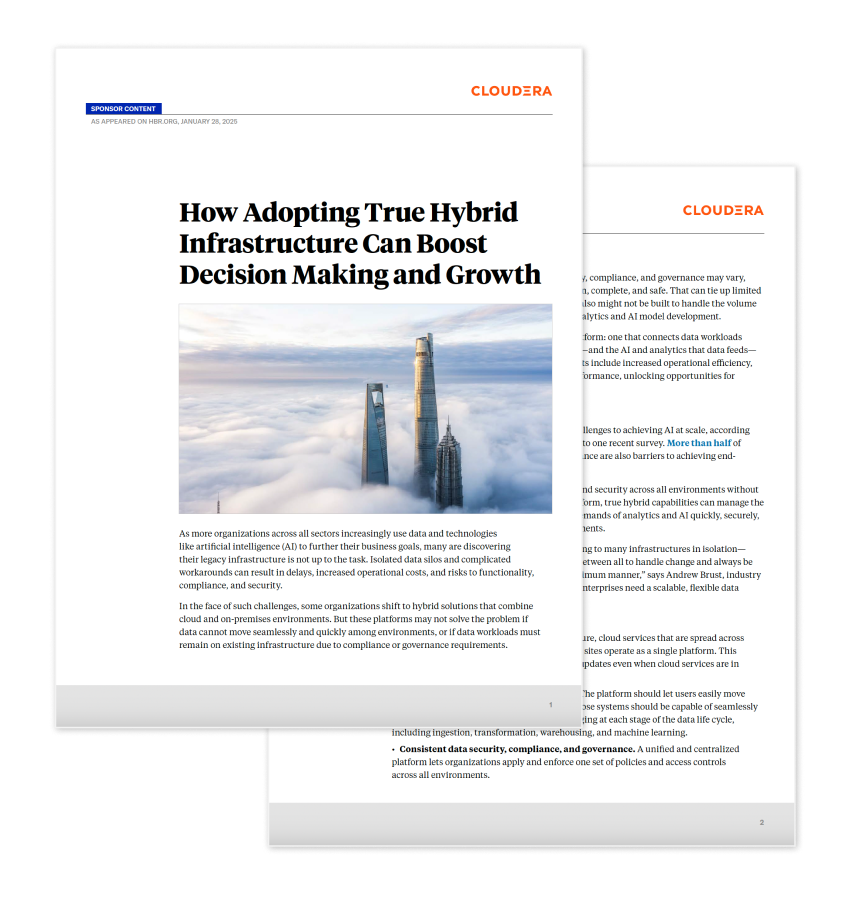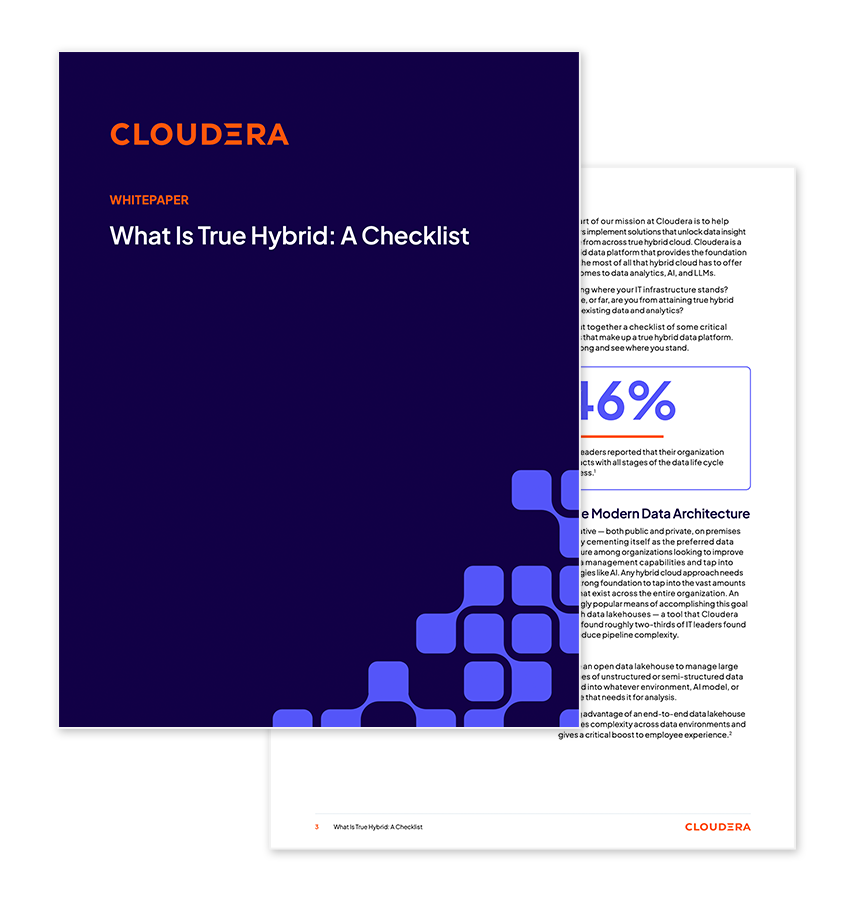Capitalize on the value of all your data.
Manage all your data—machine data, structured data, transactional data, unstructured data—anywhere. In public clouds like AWS, Azure, and GCP. On premises in data centers. And at the edge.
Experience cloud-native data analytics for data distribution, data engineering, data warehousing, transactional data, data science, and machine learning that are portable across infrastructures.
Regardless of where your data is born or where it moves to, Cloudera enables you to have consistent data security and governance. So you can bring the right analytics to the right cloud at the right time.
Just imagine the possibilities.
Hybrid cloud adoption: A growing enterprise priority.
A singular focus on cloud overlooks a vast amount of enterprise data residing on premises. Organizations are realizing the value of a hybrid data platform that enables them to put all their data to work and make better decisions faster.
93%
of organizations agree that multi-cloud and hybrid capabilities for data and analytics are key for an organization to adapt to change
52%
of organizations said that governance and compliance is what’s holding back end-to-end data management
89%
of organizations embrace multi-cloud (a combination of multiple private clouds, multiple public clouds, and hybrid cloud)
Boost decision making and growth by adopting hybrid infrastructure
Learn how this strategy reduces costs, complexity, and risks to compliance.

Key elements of cloud anywhere
A distributed cloud model
Operates as a single platform across private and public clouds and the edge so data and workloads move bi-directionally easily.
Portable, interoperable data services
Encompass the entire data lifecycle from ingestion to transformation, warehousing, and machine learning.
Data services to address every eventuality
Can handle all data—structured, semi-structured, and unstructured.
A common set of tools
Cuts through the complexity, enabling the same tools to be used across environments
Cross-platform security and governance
Enables consistent security and governance across all environments
Open and extensible
Is ready for the future and capable of extending to new clouds as they emerge
What is cloud anywhere?
It’s more than just adopting hybrid cloud. Businesses need to go a step further. Find out what is entailed.

Modern data architectures shoulder the complexity, so you don’t have to.
Stay in control without hampering the speed of implementation thanks to consistent security and governance.
Enable multi-function analytics in a cloud-native object store across clouds and on premises, powered by Apache Iceberg.
Empower teams to deliver next-generation data applications faster, easily, and cost-effectively.


